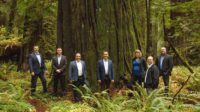The Tech Behind the Success
The people part of the new ADT was the first step. But in a company this size, providing excellent customer service would take more than just a new attitude and some extra employees. The company gets an average of 60,000 calls a day and 40,000 alarms.
There were a lot of things that were challenging about shifting a company this size, Whall says. But one advantage was ADT’s deeper pockets and ability to leverage technology in creative ways. “When you are ADT’s size you can pay for the technology. You have to use technology to help you create what you can’t just have in your head when you are a large company,” he says.
From the first call to the service end, technology is boosting employees’ abilities to better serve customers. But not all technology is good technology, says ADT’s CIO, Don Young. For example, one — the automated answering system — was slated to go, with a goal of the end of 2017. But it would first take some significant backend investment to get there.
“We were walking away from one technology in a way, but that pushed us to deploy better, more advanced technology to make sure we were routing the calls to the right people,” Young says. Using analytics, they now dip into the database to understand the customer’s behavior before the call to see who would be the best person to answer the call, he explains. “If we know the customer had a service call or alarm recently, we know what kind of guidance to give the operator. Obviously it is not a perfect science, but even during imperfect moments we rely on operator training and a voice analytics tool to help us.”
Voice analytics allow a supervisor to see if an agent is struggling with a call and jump on to help handle that customer’s issue, he explains.
Another initiative ADT employed was something called Insight, a technology that helps employees create a more personalized experience for the customer and make them feel “known” by the employee. This GUI customer overlay to Mastermind and several other systems allows an immediate view of the customer account and their experience by bringing forward important historical activity in a summary view. It also flags important items so employees can address outstanding customer needs.
On the service side, ADT recently introduced Tech Tracker. This is a service app for customers that lets them know when a service tech will arrive, his or her qualifications, and even a picture of the technician.
“It’s all about making sure we do what we say we will,” Whall says. “Things like same-day service, live answering of calls and implementing Tech Tracker help us to do that.”
Technology is also helping measure the results, Young says, citing the company’s “Perfect Day” metric at the call centers. “We actually came up with that target back at P1. There are a number of things we deemed high priority and important goals such as LCW (longest call waiting). It is always about the weakest link. Our perfect day was answering 100 percent of calls in less than 60 seconds, and transferring less than 10 percent of all calls. Anyone can hire more people to just answer the phones faster, but are you really enhancing that customer’s experience? With all kinds of metrics we make sure we are setting the right expectations for efficiency.”
Metrics also look at the ultimate results — customer attrition. “Again, the best way to grow is to keep those you already have,” Haenggi reiterates. “If you are a happy customer you stay, and pay. We start with the facts. Are they staying with us? We have customer satisfaction surveys that go out on a daily basis.”
In hard numbers, ADT’s net attrition has gone from 17.1 percent in 2015 to 14.7 in 2017 with ADT and P1 combined, but this is just the tip of the iceberg, Haenggi adds. “Do we have a goal for single digits? Of course that is something we would strive for. We were in the low 10 percent at P1 and we have that goal for ADT as well. In our overall three- to five-year plan we are on track or ahead of our plans from an attrition perspective.”
Beyond the technology, there is the unmeasurable human response as well, both for employees and customers, Pulliam adds. “There are two sides to it. When you have a customer that has been waiting for five or 10 minutes, that is a completely different customer than one you got to in less than a minute. It is palpable for the employees, that difference.”
Staying the ‘Disruptive’ Course
With all of the changes at ADT over the past year and a half, there is one thing that has remained consistent in its 143-year history: its commitment to staying on the cutting-edge, being among the first-to-market with disruptive technologies and continuing to push the envelope when it comes to new services and technologies.
Following its rollout of ADT Pulse in 2010, ADT has continued to push the residential market, reaching 2 million installed customers this past year. The company recently added voice control, using the Amazon Echo Alexa to both arm and disarm. And the ADT Canopy platform for IoT devices is now ready for prime time, with new services featuring the Life360 app, PERS and more. Significantly, ADT is also now back in the commercial business, with the merging with P1.
That gives the company the ability to add P1’s expertise in network security and enterprise security solutions for national accounts, something that ADT had divested a few years ago after a former merger broke up, Whall says. “I would like to get ADT back to where it was before they divested,” he says. “They spun off and the commercial went to the other company. There is no reason not to get back to those levels, but we have a lot of work to do. For a brand than has been in existence for 143 years, only three of those didn’t include commercial business.”
For Whall, this means expanding the very definition of what the security industry protects. “For years it was nothing more than providing protection for premises. Now we are changing that bundle so it is not just the premise but the network. People are increasingly familiar with cyber threats. How do we protect our customers, whether they are a commercial or small business or a homeowner? We want to shore up what we are doing, and get a little innovative on how to make it better.”
ADT has recently been on an acquisition path to quickly gain experience, particularly on the systems integration, network security and cyber security sides. In October, ADT acquired two security integration companies, Gaston Security and MSE. And in November the company announced the acquisition of Datashield, a leader in managed detection and response for cyber threats for mid-market and enterprise clients. “It’s easier to teach the person doing high-end technology how to do the middle and low end; that is why we end up in M&A, partnering with that expertise,” Whall explains. “Cyber is no different. It is managed detection and response, plugging into IT systems to manage that data and give an alert when something is going wrong.”
ADT now operates both a network operations center, after the Datashield acquisition that focuses on forensic reviews of companies’ networks and IT architectures, as well as a SOC in Scottsdale, Ariz., that will support a residential cyber security service destined for a 2018 rollout. “It has been in friends and family mode for a few months,” Young says.
On the strictly residential side, there is plenty of activity as well. An October roll-out of the DIY ADT Home Security Starter Kit with Samsung Smart Things and Best Buy; the new ADT Panic Response app with Samsung Gear S2 and S3; and an upcoming mobile app called ADT Go that will provide emergency response to customers when they aren’t at home are a few of the highlights.
Jay Darfler, senior vice president emerging markets, who was tasked with identifying and commercializing opportunities, told an audience gathered for the recent Securing New Ground conference in New York City in late October. “Tim created this concept of emerging markets inside of ADT. I carry not just a development budget but the ability to set up a team to identify new and alternative revenue streams.”
Darfler explained his litmus test for any new idea: “For us it has to be able to be incorporated into a professionally monitored construct. We are going to stand behind our customer service. If I can’t deliver world-class monitoring and service, that is an innovation I am going to have to pass on.”
This kind of approach led to both the Samsung/Best Buy deal and the upcoming ADT Go rollout, he explained. “ADT Go will use the smartphone to detect driving behavior. We had never thought about ADT for roadside assistance before, but that fit nicely into the construct.”
Young takes the criteria for new developments a step farther, adding “realistic and dependable” to the list. “As much as we have a desire to sell new technology, we have a bigger desire to make sure it all works reliably. We don’t want to ignore trends, but we are hyper sensitive on any of these trends and solutions that they are being supported reliably. The last thing we want to do is deploy the shiny new toy that isn’t reliable. We enjoy the innovative label, but the reliable one is more important.”
Which comes back to the simple mantra of customers first that Whall has asked every employee to keep top of mind, DeVries adds. “For me, if there is any one thing to underscore it is how proud we are of our employees. Many are the same employees that were acquired when the deal was done in May of 2016. They have been delivering on the promises we make to customers and there is just an overwhelming sense of pride from our leadership in ADT and P1 employees.”
Whall concludes, “It is a privilege to have this job and be doing this with ADT. It has been a great opportunity and a huge honor, and I am humbled to be able to say I am the caretaker of ADT and its legacy.”













